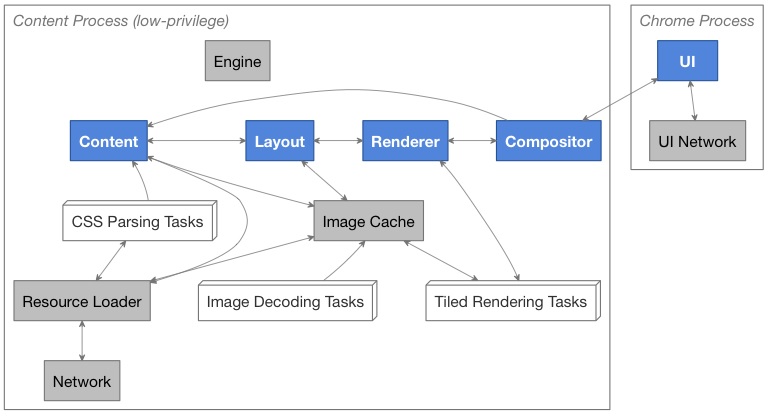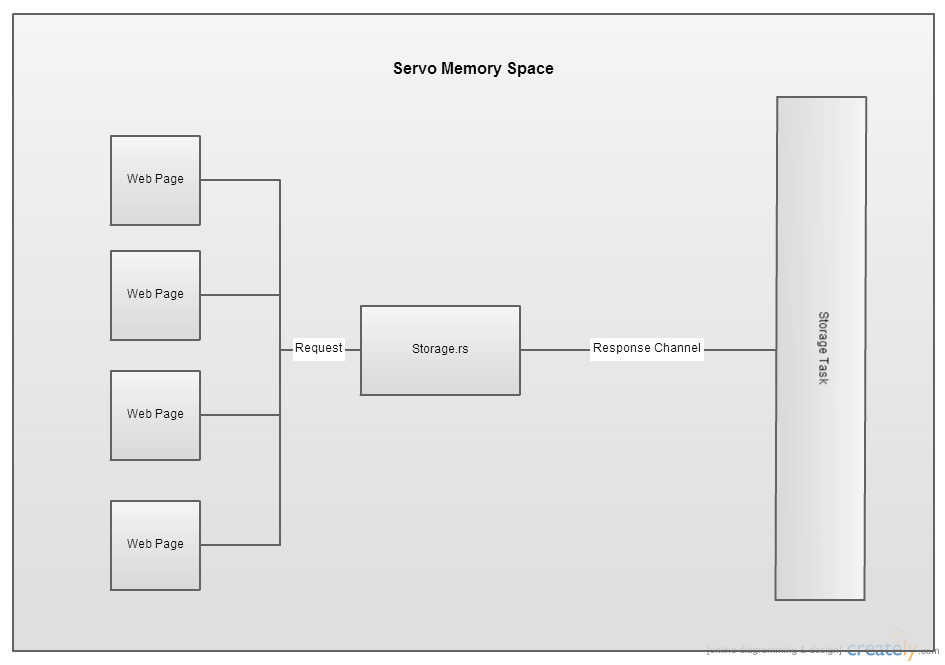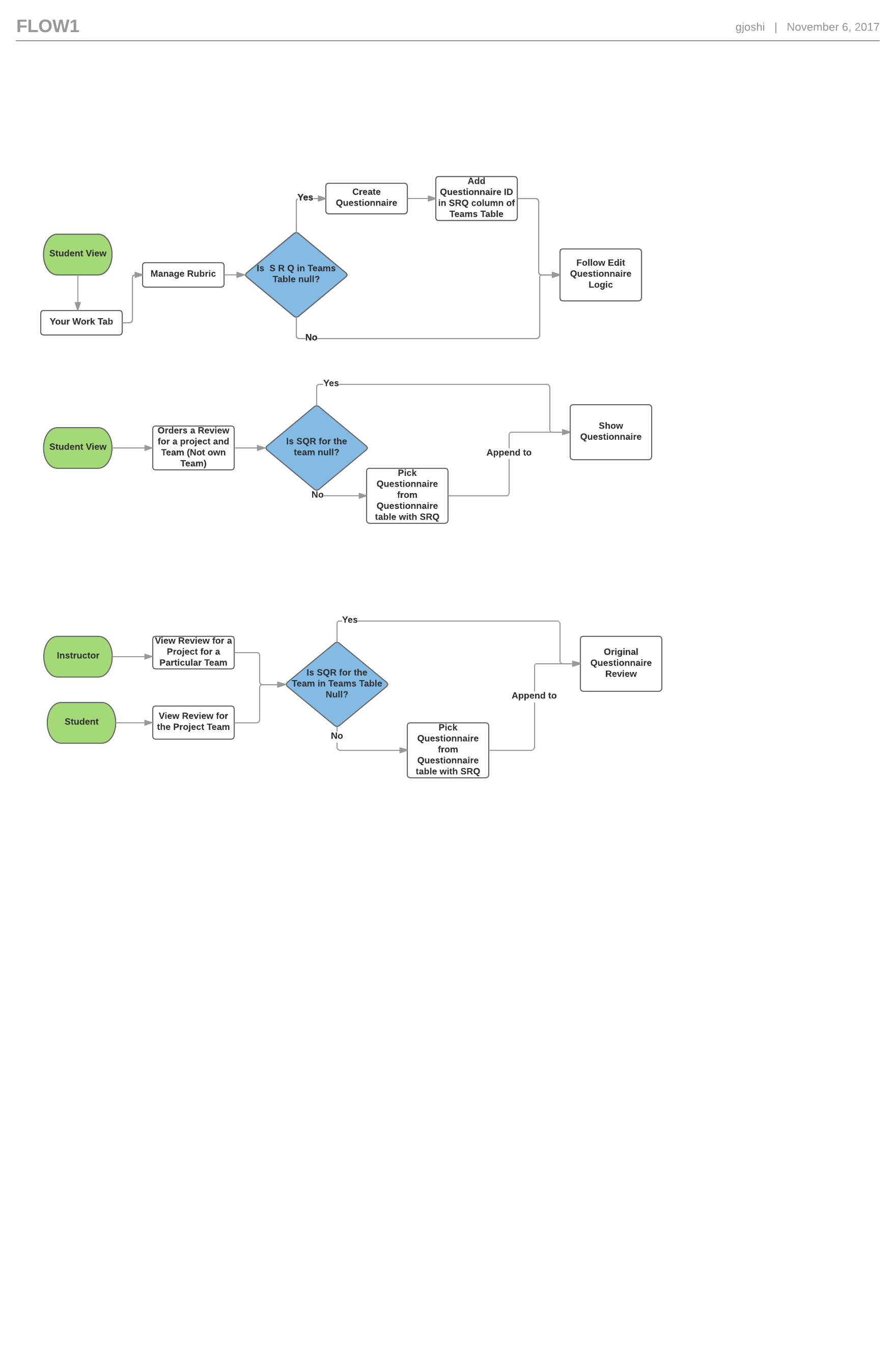CSC/ECE 517 Fall 2014/final design doc M1450 navr: Difference between revisions
| Line 101: | Line 101: | ||
== UML diagrams (Eg use case diagram, class diagrams) == | == UML diagrams (Eg use case diagram, class diagrams) == | ||
[[File:File.png|200px | [[File:File.png|200px]] | ||
== Proposed Test Cases == | == Proposed Test Cases == | ||
Revision as of 23:04, 11 November 2014
Introduction
Rust
Rust is a modern systems programming language focusing on safety and speed to build reliable and efficient systems <ref> http://doc.rust-lang.org/nightly/intro.html </ref>. It accomplishes the goals of memory safe without using garbage collection and it supports concurrency and parallelism in building platforms.
Rust’s lightweight task mechanism also promises to allow fine-grained isolation between browser components, such as tabs and extensions, without the need for expensive runtime protection schemes, like operating system process isolation. <ref> https://www.mozilla.org/en-US/research/projects/ </ref>
Servo
Mozilla Research team is currently working on an experimental project to develop a new Web browser engine "Servo", that is capable of supporting a variety of current and next generation of hardware like mobile devices, multi-core processors and high-performance GPUs. Servo builds on top of Rust to provide a secure and reliable foundation. It is currently developed on 64 bit devices.<ref> https://www.mozilla.org/en-US/research/projects/ </ref>
The main objectives of this experimentation project is improving the layout to graphics rendering - to optimize for power efficiency and maximize parallelism. <ref> https://www.mozilla.org/en-US/research/projects/ </ref>
Purpose
The purpose of this project is to introduce the support related to sessionstorage and localstorage in Servo Broswer, for this we have to create Storage structure and allow web pages to store data in the Servo memory space.
Background
Persistent storage on the web is used by many services such as the popular Disqus commenting interface. Implementing this important specification in Servo will allow stateful web applications to run, and will help expose any architectural problems that Servo's radical design may cause.
Architecture
The Architecture comprises of a Storage Task which will be responsible to hold all the data that the web page requests to save. This happens via Channels in Rust, which implements a Sender Receiver protocol, the task is runnning in the background and waits to receive the data sent from the web page.
Architecture Explained
- Each box represents a Rust task.
- Blue boxes represent the primary tasks in the browser pipeline.
- Gray boxes represent tasks auxiliary to the browser pipeline.
- White boxes represent worker tasks. Each such box represents several tasks, the precise number of which will vary with the workload.
- Dashed lines indicate supervisor relationships.
- Solid lines indicate communication channels.
Requirement Analysis <ref>https://github.com/servo/servo/wiki/Storage-student-project</ref>
As part of our project, we have to implement the Web Storage specification in Servo. Implementing this important specification in Servo will allow stateful web applications to run, and will help expose any architectural problems that Servo's radical design may cause. <ref> https://github.com/servo/servo/wiki/Storage-student-project</ref>
Below is a high level overview of the various steps that need to be carried out to achieve this:
- Create the Storage interface and its stub implementation.
- Create the WindowSessionStorage interface making it return a Storage instance.
- Create a Storage Task which will be used to contain all stored data.
- Define a message-passing interface for reading and writing stored data for a particular browser tab.
- Use the Storage task in the implementation of Storage.
- When the value of a stored data is changed, notify its respective browser tab.
- Pass as many tests as possible.
- Implement the WindowLocalStorage interface which behaves slightly different from the WindowSessionStorage interface.
Data Design
Data Description
The following are the data structures that will be used.
Storage | TreeMap<String,String>
UrlMap | TreeMap<String,TreeMap<String,String>>
Component Design
Task
Rust provides safe concurrent abstractions through a number of core library primitives. This guide will describe the concurrency model in Rust, how it relates to the Rust type system, and introduce the fundamental library abstractions for constructing concurrent programs.
Tasks provide failure isolation and recovery. When a fatal error occurs in Rust code as a result of an explicit call to panic!(), an assertion failure, or another invalid operation, the runtime system destroys the entire task. Unlike in languages such as Java and C++, there is no way to catch an exception. Instead, tasks may monitor each other to see if they panic.
Tasks use Rust's type system to provide strong memory safety guarantees. In particular, the type system guarantees that tasks cannot induce a data race from shared mutable state.
// Generate some state locally
let child_task_number = generate_task_number();
spawn(proc() {
// Capture it in the remote task
println!("I am child number {}", child_task_number);
});
Channel
Now that we have spawned a new task, it would be nice if we could communicate with it. For this, we use channels. A channel is simply a pair of endpoints: one for sending messages and another for receiving messages.
The simplest way to create a channel is to use the channel function to create a (Sender, Receiver) pair. In Rust parlance, a sender is a sending endpoint of a channel, and a receiver is the receiving endpoint.
let (tx, rx): (Sender<int>, Receiver<int>) = channel();
spawn(proc() {
let result = some_expensive_computation();
tx.send(result);
});
some_other_expensive_computation();
let result = rx.recv();
Design patterns
We will be using "Delegation Pattern" in our project. The Storage interface is used by web applications to access the Web Storage provided by the browser. However, the actual data is stored somewhere else(Database/FileSystem/Memory). So, it makes sense to create another class which will maintain the actual stored data. The Storage class can then delegate the task of storing/retrieving data to this class. We will create a class "WebStorageTask" for this purpose.
UML diagrams (Eg use case diagram, class diagrams)
Proposed Test Cases
Further Readings
Learning Rust by Examples: http://rustbyexample.com/
Javascript as Servo's Garbage Collector: http://blog.mozilla.org/research/2014/08/26/javascript-servos-only-garbage-collector/
References
<references/>


